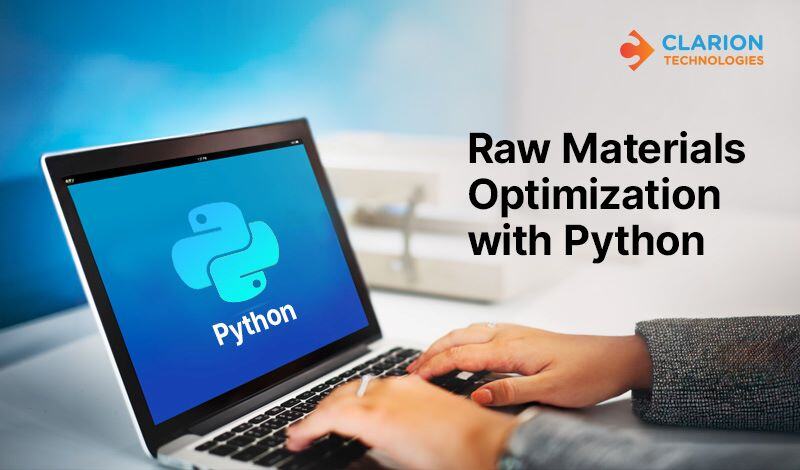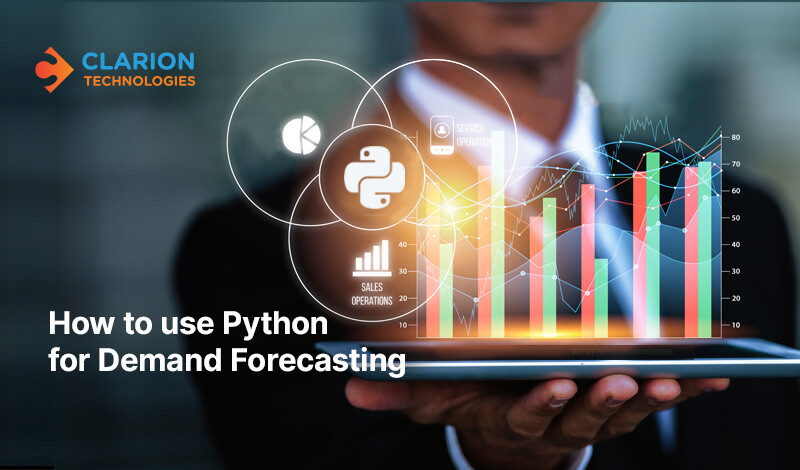Delve into the pivotal role Python plays in predictive maintenance and explore how it is reshaping the manufacturing landscape.
In a fast-paced, competitive world of manufacturing, every minute is precious and every downtime accounts for financial loss and disturbance in production. Businesses want to maintain continuous operations and smooth and efficient high-quality output production. Predictive maintenance helps manufacturing businesses in foreseen equipment failures, by ensuring before-time interventions using insights for data analytics.
This is possible with advanced programming languages like Python. It is the reason why predictive maintenance is possible. This language has vast libraries that have capabilities to support manufacturing with data analytics. This process minimizes unexpected disruptions and helps drive efficiency.
Learn how Python ensure effective predictive maintenance models to ensure smooth and efficient manufacturing.
What is Predictive maintenance?
Predictive maintenance means tracking the conditions in real-time of the performance of an equipment and its health for the long term. The sensors are used to collect data with machine learning (ML) techniques to detect and address any problems or predict any risks and to dispel them. It’s the process of predicting outcomes backed by data at the right time to help address any present and prevent potential damage in the future.
Why is it used in manufacturing?
The manufacturing industry has adopted the use of predictive maintenance in Python application, as it helps enhance efficiency, improve product quality, reduce downtime, and optimize the use of resources.
Predictive maintenance in manufacturing identifies trends and patterns in the manufacturing process enabling businesses to optimize production schedule and workflow. This helps in optimizing the use of machinery and labor, reducing idle time and bottlenecks.
According to a report by Deloitte, businesses have seen productivity increases by 25%, a 70% reduction in breakdown, and a 25% reduction in maintenance costs.
How to Use Python for Predictive maintenance in manufacturing
Using Python for predictive maintenance applications in manufacturing means using Python powerful libraries and frameworks. With these tools, Python can leverage machine learning models to build, train, and deploy programs that can tell equipment failures and optimize maintenance schedules.
Python is known for its simplicity and readability, which helps Python developers to create a quick prototype and develop solutions. Python’s large community helps in ensuring continuous improvement, helps leverage tools, and resources with ample of support.
Python easily integrates with other technologies and platforms. Here are steps to use Python for predictive maintenance:
- Data Collection and processing - Data from sensors, logs, and maintenance records is collected. Pandas helps clean and preprocess data.
- Feature engineering - Features relevant to predictive engineering needs are created by Python programmers, which consists of standard deviations, moving averages and standard deviating features.
- Model Building - Split the data into training and testing sets. Use Sci-kit learn to train a machine learning model.
- Model Evaluation - Use precision, accuracy, F1 score, and recall to evaluate models performance using metrics.
- Deployment - Use frameworks like Django and flask for deploying the models.
Read more in our recent blog on Python modules (libraries) for automation.
How Python helps in Predictive maintenance in Manufacturing?
Data Handling: In large manufacturing industry, data is generated from sensors, logs, and records, which is simplified using Python’s library Pandas. It helps in handling large datasets with data cleaning and feature engineering. This process helps in preparing data of predictive maintenance models with greater accuracy and reliability.
Machine Learning: Python supports various machine learning libraries that are very useful in predictive maintenance. Libraries like Sci-kit Learn has simple and very apt libraries with great interfaces to implement machine learning algorithms. Tensor flow and Pytorch can be used for more complex machine learning models like deep learning, predicting equipment failures, predict maintenance needs with precision.
Visualization: Python’s libraries like Matplotlib and Seaborn help understand data trends and model performance. These libraries are also used for data visualization in Python. Interactive charts and graphs help represent sensor data, ensuring easy data interpretation and monitoring. They also help in identifying patterns and trends and also in monitoring the performance of predictive models.
Real-time monitoring: Predictive maintenance with Python is also used to generate real-time data with ML. Python’s libraries help in analyzing vast amounts of data from sensors in real-time. This helps in continuous monitoring, early detection, and predicting potential failure. It helps enhance productivity and reliability in manufacturing.
Integration and deployment: To deploy predictive maintenance analysis using Python in manufacturing, Python experts require integration with existing infrastructure. Python’s frameworks like Django and Flask help in easy deployment, making the task easier. Python has cloud services support, which ensures that predictive maintenance models can be scaled to suit manufacturing process and offer real-time alerts and insights.
Conclusion:
Leverage Python’s capabilities in data handling, machine learning, and visualization. Manufacturing businesses can reduce down time, maintaining industrial machines, optimize schedules, and improve operational efficiency. Contact our Python experts to optimize your manufacturing processes and improve efficiency.





